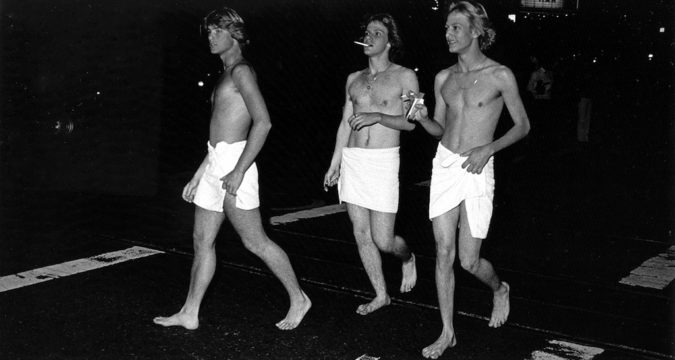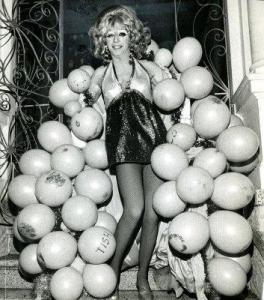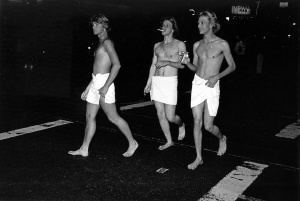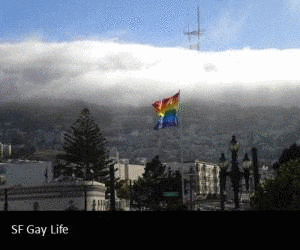
SF’s Gay Halloween – Part 3
Halloween in the Polk, SF’s first gay downtown

The Nob Hill Club opened in the Polk in 1950, becoming the neighborhood’s first gay bar, and the neighborhood quickly became the City’s first “gay downtown,” with not only gay bars but also restaurants, retail shops, and other stores and services catering to the gay community. The City’s first proper Gay Pride Parade marched down Polk Street to City Hall in 1972.
The neighborhood’s first Halloween street party was held on Polk Street in 1970, and by the mid-1970s the party had grown large enough to snarl automobile traffic in the neighborhood. The mainstream press started to cover the gay festivities.
In 1976, an estimated 70,000 revelers forced the police to close off Polk Street to automobile traffic. An uninvited element, hearing about the street party through the media’s hype, decided to crash the party: rowdy teens looking to get drunk in the streets and thugs out to cause trouble, picking pockets and bashing gays.
The media attention was an embarrassment to the City’s conservatives. The Board of Supervisors blocked a permit request to close Polk Street for the 1977 Halloween, but when merchants and the police protested, Mayor George Moscone was able to pressure the Board to relent.

photo by Blaine Dixon
In 1978, conservative Supervisor Dan White tried again to block permits to close off Polk Street. (Less than a month after Halloween, White was arrested for assassinating Mayor Moscone and openly-gay Supervisor Harvey Milk.)
That same year, California State Senator John Briggs had forced a rabidly anti-gay initiative onto the California ballot. The initiative, Proposition 6, commonly called the Briggs Initiative, would have required public schools to fire gay teachers as well as any straight allies who spoke in favor of gay rights.
Halloween fell a week before the November elections. Hoping for splashy media coverage, Briggs called the San Francisco Police Department on Halloween afternoon to announce that he planned to be on Polk Street that night – no doubt hoping to show in the crowd of 80,000 revelers some sensationalized footage of drag queens and debaucherous queers on a holiday that Briggs said should be for kids.
But when Briggs arrived in the City, he was met blocks away by a special delegation that included Mayor George Moscone, Supervisors Harvey Milk and Carol Ruth Silver, and Chief of Police Charles Gain with an entourage of about 25 police officers. Together, the Mayor and the Police Chief persuaded Briggs that it wouldn’t be safe for him to go to Polk Street. Just 15 years after they had forced the Black Cat Café to close, city officials and the police were working together to let the gays party in peace. Briggs reluctantly drove back to Sacramento and a week later his initiative was soundly rejected by voters, 58.4% voting no and only 41.6% voting yes.
But though Briggs wasn’t able to disrupt the Polk Street celebration, the hoodlums returned. That night, at least 60 people were arrested, with six store windows broken and at least one clothing store looted.
That was the end of the Polk’s Halloween heyday. In 1979, the City refused to close Polk Street and cars ended up choking the party. But by then, the Castro had already overtaken the Polk as the “gay village,” and the real party jumped over to Castro Street.
